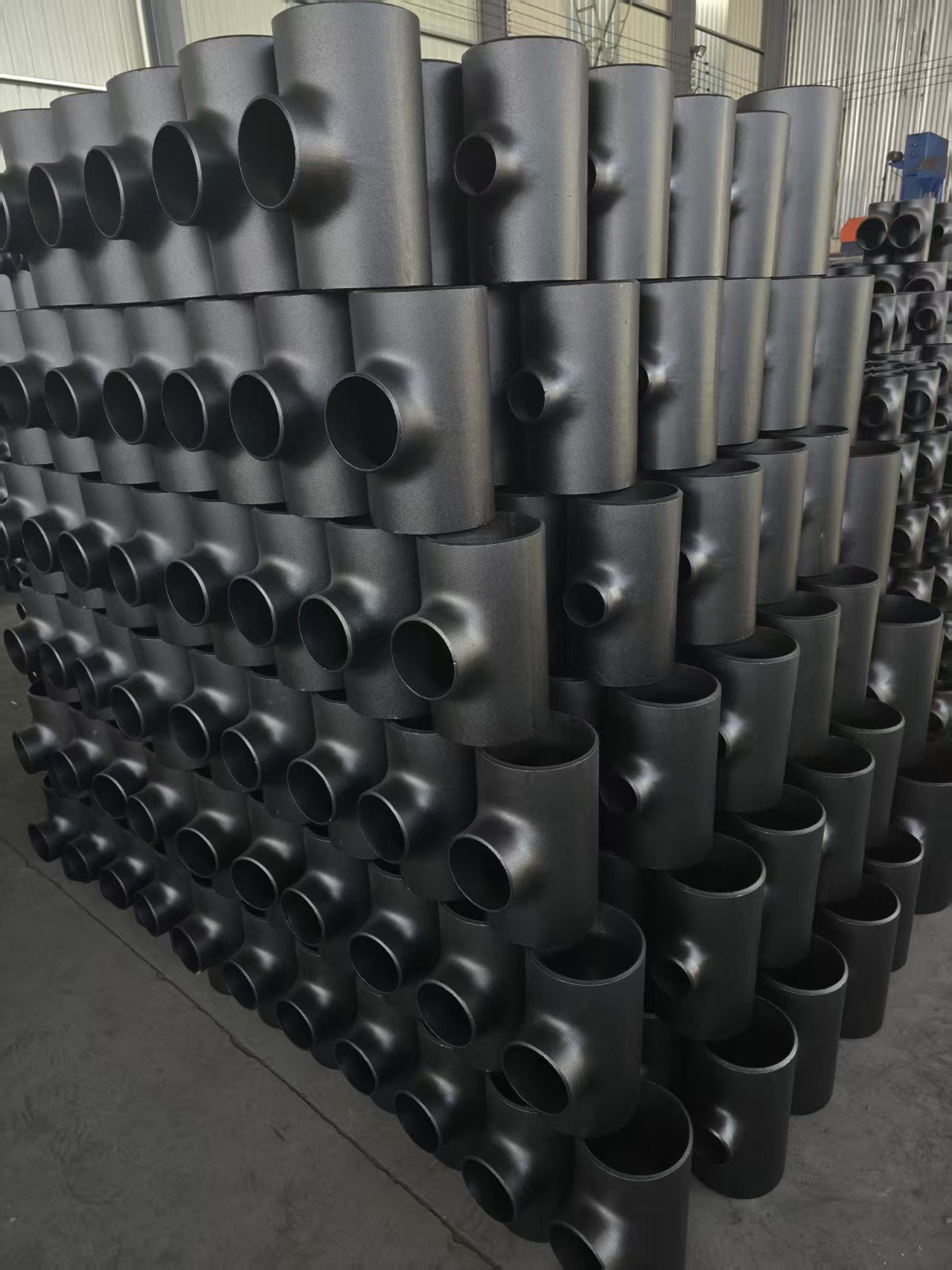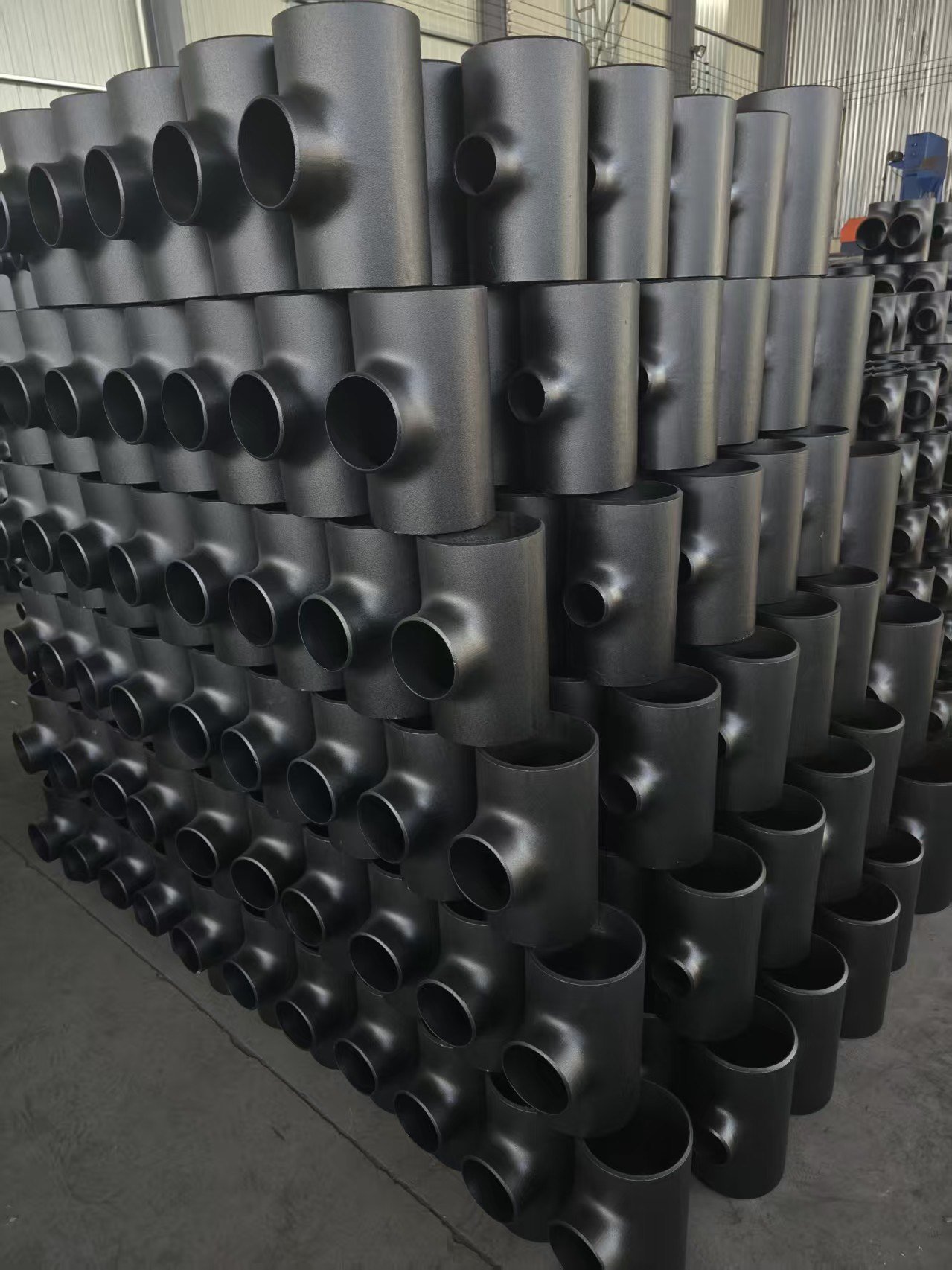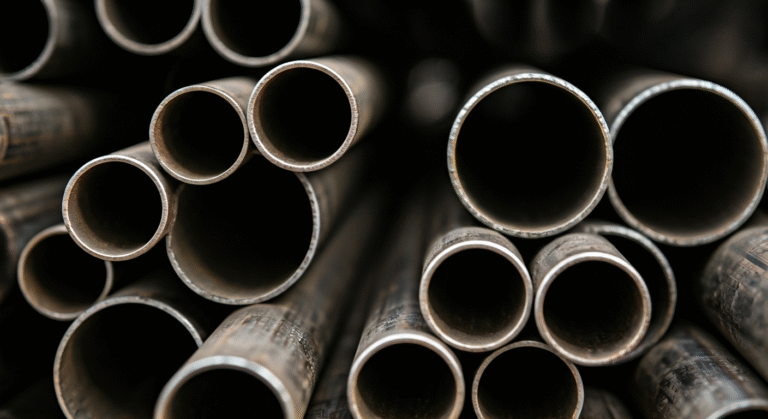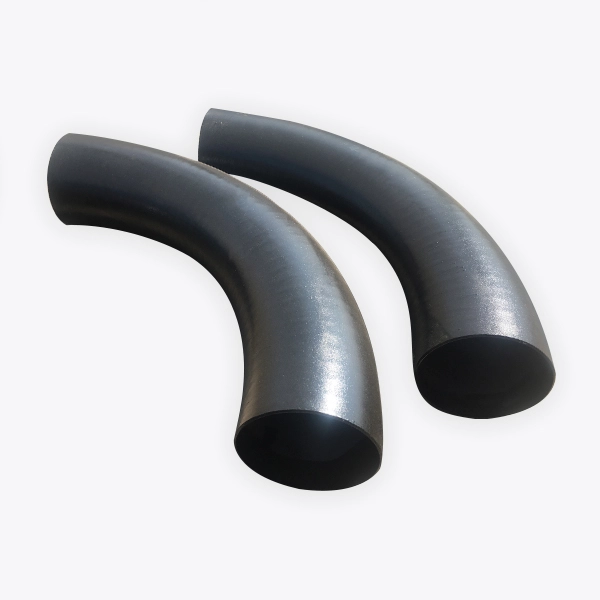-
Zona industriale di Yinzhuang, contea di Mengcun, città di Cangzhou, provincia di Hebei, Cina

A234 WPB Pipe Tee: A Must-Have for Your Pipeline

Punti salienti
- A234 WPB is the most common material grade for carbon steel butt weld fittings, known for its strength.
- Butt weld fittings create a continuous metal structure that enhances the overall strength of the piping system.
- These versatile pipe fittings are essential for branching off or changing the direction of flow.
- Pipe tees come in equal and reducing types to match your specific pipeline requirements.
- The welding process ensures a strong, leak-proof connection for a more reliable piping network.
- They are available in a wide range of sizes, from 1/2 inch up to 72 inches.
Introduzione
When constructing robust and reliable pipeline systems, the components you choose are critical. While the pipes themselves form the main structure, the fittings that join them are just as important. Butt weld fittings are a popular choice for creating strong, permanent connections. Among these, the A234 WPB pipe tee stands out as a fundamental component for any project needing to branch a line. These steel pipe fittings are designed for performance and durability in demanding industrial environments.
Understanding the A234 WPB Pipe Tee
An A234 WPB pipe tee is a specific type of pipe fitting made from carbon steel that conforms to ASTM A234 WPB material standards. It has a T-shape, featuring a straight-through pipe section and a 90-degree branch on the side. This design allows you to split the flow from a main pipeline.
These steel pipe fittings are connected to pipes using a butt welding process, which creates a solid, continuous seal. This makes them a go-to choice for systems operating under moderate to high pressures and temperatures. We will explore what makes these fittings unique and where they are most commonly used.
What Sets the A234 WPB Pipe Tee Apart?
The primary advantage of using an A234 WPB pipe tee lies in its construction. The butt welding process creates a continuous metal structure between the fitting and the pipe. This method significantly increases the strength of the joint, making the entire system more robust and less prone to leaks compared to other connection types.
These carbon steel fittings are manufactured for moderate and high-temperature service, making them ideal for industries like oil and gas. When an A234 WPB tee is properly matched with the correct pipe schedule, it ensures a seamless, uninterrupted flow inside the pipe. This smooth interior reduces turbulence and pressure drop within the system.
Ultimately, the goal is to build reliable connections that last. The combination of strong material and a full-penetration weld gives you confidence that your pipeline can handle demanding operational conditions without failure. This durability is why A234 WPB tees are a staple in industrial piping.
Common Uses in Piping Systems
In any complex piping system, you rarely have a single, straight run of pipe. The main function of a butt weld tee is to create a 90-degree branch from a main line. This allows you to divert flow or connect additional equipment easily and securely.
These steel butt weld fittings are incredibly versatile and found in various applications across many industries. Their ability to manage flow distribution is essential for the efficient operation of the entire network. Whether you need to add a gauge, a valve, or an entirely new pipeline, a tee is the fitting for the job.
Here are some of the primary uses for a butt weld tee:
- Changing the direction of flow by 90 degrees.
- Joining pipes of different sizes using a reducing tee.
- Providing branches for auxiliary equipment.
- Creating takeoffs for system expansions.
Key Specifications and Standards
To ensure safety and compatibility, butt weld fittings must adhere to strict industry standards. The material they are made from is governed by specifications like ASTM A234 WPB, which covers carbon and alloy steel fittings. This standard guarantees the material’s chemical composition and mechanical properties.
Furthermore, the dimensions of these fittings are standardized by ASME B16.9. This ensures that a tee from any manufacturer will fit perfectly with a pipe of the specified pipe schedule. Understanding these standards and demanding proper certifications is key to building a reliable system. Let’s look closer at what these specifications mean for you.
ASTM A234 WPB Explained
ASTM A234 is the standard specification for wrought carbon steel and alloy steel pipe fittings for moderate and high-temperature service. The “WPB” part of the designation refers to the specific grade of carbon steel. Grade WPB is the most common and widely used material for carbon steel butt weld fittings due to its excellent strength and weldability.
When you purchase an ASTM A234 WPB fitting, you are getting a product that meets precise manufacturing and material requirements. These steel pipe fittings are designed to have a strength level comparable to the pipes they connect, ensuring a consistent and secure pipeline. This standardization is vital for achieving a seamless flow and maintaining system integrity.
Different materials are used for various applications, and each has its own ASTM standard. Here is a simple breakdown of common material types and their corresponding standards:
Tipo di materiale | Standards and Grades |
|---|---|
Acciaio al carbonio | ASTM A234 WPB, WPC; MSS-SP-75 WPHY |
Acciaio legato | ASTM A234 WP1, WP5, WP9, WP11, WP22, WP91 |
Acciaio inox | ASTM A403 WP304, WP304L, WP316, WP316L |
Certifications and Quality Requirements
When sourcing pipe fittings, verifying their quality through certifications is essential. Reputable manufacturers provide documentation, such as Material Test Reports (MTRs), that confirm the fitting’s compliance with ASTM A234 WPB standards. These documents prove the material’s chemical and physical properties, giving you peace of mind.
One of the most important quality requirements for butt weld fittings is the end preparation. All butt weld tees have beveled ends according to ASME B16.25 standards. This bevel creates a groove for the weld metal, allowing for a strong, full-penetration weld without requiring extra preparation on-site, saving you time and labor.
To ensure you receive high-quality fittings, always look for the following quality requirements:
- Compliance with dimensional standards like ASME B16.9.
- Properly beveled ends according to ASME B16.25.
- Clear markings indicating material grade, size, and schedule.
- Heat treatment performed to remove residual stresses and achieve desired mechanical properties.
Types of Butt Weld Tees and Their Differences
Not all butt weld tees are the same. The two main types of fittings you will encounter are equal tees and reducing tees. The difference between them is simple but has a major impact on their application within a piping system. Your choice depends on whether you need to maintain the pipe size or step it down.
Beyond the shape, pipe fittings can also be differentiated by their connection method. While we are focusing on butt weld fittings, it is also helpful to understand how they compare to threaded tees. Each type of weld has its own set of advantages and is suited for different situations.
Equal vs. Reducing Butt Weld Tees
An equal tee, sometimes called a straight tee, is the most common type. In an equal tee, the diameter of the branch is the same as the diameter of the main pipe. This means all three openings of the tee share the same nominal size, allowing you to create a branch line that maintains the original pipe diameter.
A reducing tee, on the other hand, is used when you need the branch connection to be smaller than the main line. The two openings on the straight run match the main pipe, but the 90-degree branch opening has a smaller nominal size. This is perfect for connecting smaller pipes or equipment without needing an additional reducer fitting.
Here is a quick comparison to help you choose:
- Equal Tee: All three outlets have the same size.
- Reducing Tee: The branch outlet is smaller than the main outlets.
- Flow: An equal tee maintains the direction of flow and size, while a reducing tee changes it.
- Use Case: Use an equal tee for same-size branches and a reducing tee to connect smaller pipes.
Butt Weld vs. Threaded Tees: Which to Choose?
The fundamental difference between these two types of tees is the connection method. Butt weld fittings are welded directly to the pipe, creating a permanent, fused joint. Threaded tees, as the name suggests, have threads that screw onto the pipe. This difference in the type of weld and connection dictates where each is best used.
Butt weld fittings offer more reliable connections for high-pressure and high-temperature systems. The welded joint becomes part of the pipe, ensuring a strong, leak-proof seal and a smooth inner surface for uninterrupted flow. While threaded fittings are easier to install, they can be a potential leak point, especially under stress or vibration.
Consider these points when making your decision:
- Strength: Butt weld fittings provide a much stronger and more robust connection.
- Permanence: Welding is permanent, while threaded connections can be disassembled.
- Pressure Rating: Butt weld fittings are suitable for higher pressures and temperatures.
- Pipe Size: Threaded fittings are typically used for smaller-diameter pipes, while butt weld fittings are available in all sizes.
Materials, Sizes, and Selection Considerations
Butt weld tees are manufactured from a variety of materials to suit different applications and environments. The most common materials include carbon steel, stainless steel, and alloy steel. Your choice of material will depend on factors like the fluid being transported, operating temperature, and pressure.
Selecting the right fitting also involves matching the size of the pipe and its schedule. Butt weld fittings are available in an extensive range of sizes, from as small as 1/2 inch to as large as 72 inches. Let’s explore how to navigate these options to find the perfect fit for your project.
Choosing Between Carbon Steel and Stainless Steel Tees
Carbon steel, particularly grade A234 WPB, is the workhorse of industrial piping. It is chosen for its high strength, durability, and excellent performance in high-temperature applications. For most general-purpose pipelines carrying oil, gas, steam, or water where corrosion is not a major concern, carbon steel is the most cost-effective and reliable choice.
Stainless steel tees are selected when corrosion resistance is the top priority. These fittings are ideal for use in chemical processing, food and beverage, and pharmaceutical industries where the purity of the product is critical. Stainless steel also offers a cost advantage in thinner wall applications, such as Schedule 10, compared to carbon steel.
Here’s when to use each material:
- Carbon Steel: Best for general-purpose applications requiring high strength and temperature resistance.
- Acciaio inossidabile: Ideal for corrosive environments or when hygiene is a concern.
- Costo: Carbon steel is typically more affordable for standard applications.
- Strength: Both materials offer excellent strength, but carbon steel is often preferred for boosting the strength of the piping system in non-corrosive, high-pressure scenarios.
Installation and Application Insights
Proper installation is crucial to harnessing the full benefits of an A234 WPB pipe tee. The process involves more than just welding; it requires careful preparation and alignment to ensure a strong, lasting connection. A well-installed tee contributes to the integrity of the entire system, whether it’s part of a long stretch of horizontal piping or a complex manifold.
The application itself heavily influences both the installation and selection process. A tee used in a system alongside a butt weld elbow or long radius elbow requires careful planning to manage flow dynamics. The following sections will provide key insights into getting the installation and selection right.
Proper Installation Practices for A234 WPB Tees
The installation of butt weld fittings begins with proper alignment. The tee must be squared up with the straight line pipe to ensure the branch is at a perfect 90-degree angle. The beveled ends of the fitting and the pipe must be clean and free of any debris before being brought together for welding.
Once aligned, a welder creates a root pass to join the pieces, followed by subsequent passes to fill the groove completely. This process creates a full-penetration weld that is as strong as the pipe itself. This technique is used for all butt weld fittings, whether it’s a tee, an elbow with a long radius, or another component like a lap joint stub end.
For a successful installation, follow these best practices:
- Ensure the ends of the pipe and fitting are clean and properly beveled.
- Align the tee and pipe accurately before tack welding.
- Use a qualified welder and the correct welding procedure for carbon steel.
- Perform a full-penetration weld to ensure maximum joint strength.
Selecting the Right Tee for Your Project
Choosing the right tee is a critical step in designing reliable connections for your pipeline. The first and most important factor is the size of the pipe. You must select a tee with a nominal pipe size (NPS) that matches the diameter of your pipes. This ensures a perfect fit for welding.
Equally important is the specified pipe schedule. The schedule number indicates the wall thickness of the pipe and fitting. Matching the schedule of the tee to the pipe is essential for creating a smooth, uninterrupted interior surface. This seamless transition minimizes turbulence and pressure loss. With various types available, considering all factors is key.
Use this checklist to select the right tee:
- Nominal Pipe Size (NPS): Match the tee’s diameter to your pipe.
- Pipe Schedule: Ensure the wall thickness of the tee and pipe are identical.
- Materiale: Choose between carbon steel, stainless steel, or alloy steel based on your application.
- Type: Decide if you need an equal tee or a reducing tee for your branch line.
Conclusione
In summary, the A234 WPB pipe tee is an essential component for any piping system, offering versatility and reliability in various applications. Its robust specifications ensure it meets industry standards while providing the durability needed for efficient performance. Whether you are considering equal or reducing butt weld tees, understanding the material differences, or exploring installation practices, this fitting is designed to meet your project’s unique requirements. By choosing the right tee for your needs, you can enhance the efficiency and longevity of your pipeline system. If you have further questions or need assistance with your selection, feel free to reach out for a consultation.
Domande frequenti
Where is an A234 WPB pipe tee typically used?
An A234 WPB pipe tee is commonly used in industrial pipeline systems for oil, gas, water, and other fluids. Its carbon steel construction makes it ideal for various applications requiring high strength and performance in moderate to high-temperature environments. These butt weld fittings are essential for creating branches in a pipeline.
How do I determine the right size of butt weld tee?
To determine the right size, you must match the tee’s nominal size (NPS) and specified pipe schedule to the connecting pipe. This ensures the inner and outer diameters align perfectly, which is crucial for a smooth flow and creating reliable connections. For reducing butt weld fittings, you also need the branch’s pipe size.
When should I select a carbon steel tee over stainless steel?
You should select a carbon steel tee for applications where high strength and performance at high temperature are needed, and corrosion is not the primary concern. Carbon steel butt weld fittings are a cost-effective choice for general-purpose pipelines, significantly contributing to the overall strength of the piping system.


